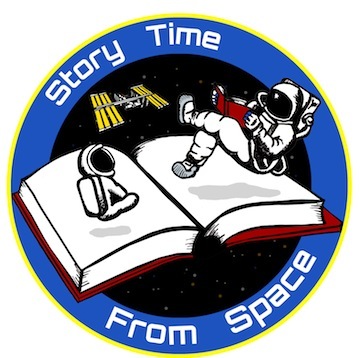
The five books currently orbiting Earth aboard the International Space Station.
Imagine astronauts on the International Space Station reading stories to the children of Earth as the world rotates below.
Imagine videos of the readings accessible via the web to everyone in the world, along with additional videos of educational science demonstrations conducted in weightlessness, all accompanied by lesson plans and classroom activities that teachers or families can use.
Imagine a community of educators, scientists, and artists all working together to make this dream a reality...
Now, imagine no more... it's Story Time from Space!
- Learn more about the program by visiting the website,storytimefromspace.com.
- "Like" the "Story Time From Space" Facebook page, where you'll find lots of additional photos and other updates.
- Tweet about it on Twitter using the hashtag #storytimespace.
- Volunteer to pilot a curriculum in your school district or classroom. If interested, email program leader Patricia Tribe.
- Check out the Kickstarter page.
I believe that for any form of education to be successful, we need to focus simultaneously on three things: education, perspective, and inspiration. The education part is the specific content that we want students to learn, but if we present this alone, students won't see the value in learning it. To make it meaningful, the education part must be accompanied by the perspective and inspiration parts. The perspective part should show them how what they are learning will help them gain perspective on their own lives and our place in the universe. The inspiration part should make them care about what they learn, ideally in a way that makes them dream of how much better the world could be if they get an education and become part of the solution for the future. Story Time From Space encapsulates this education-perspective-inspiration approach better than any other education program I've ever seen. I hope you'll become a part of it.
Disclosure: While I am now part of the team supporting Story Time From Space, I do not receive any compensation from this program. I support it because I'm honored to have had my books selected by the program, and because I so strongly believe in its goals.

Please visit storytimefromspace.com and show your support for the program.
Follow Jeffrey Bennett on Twitter: www.twitter.com/jeffreyObennett
- Log in to post comments
